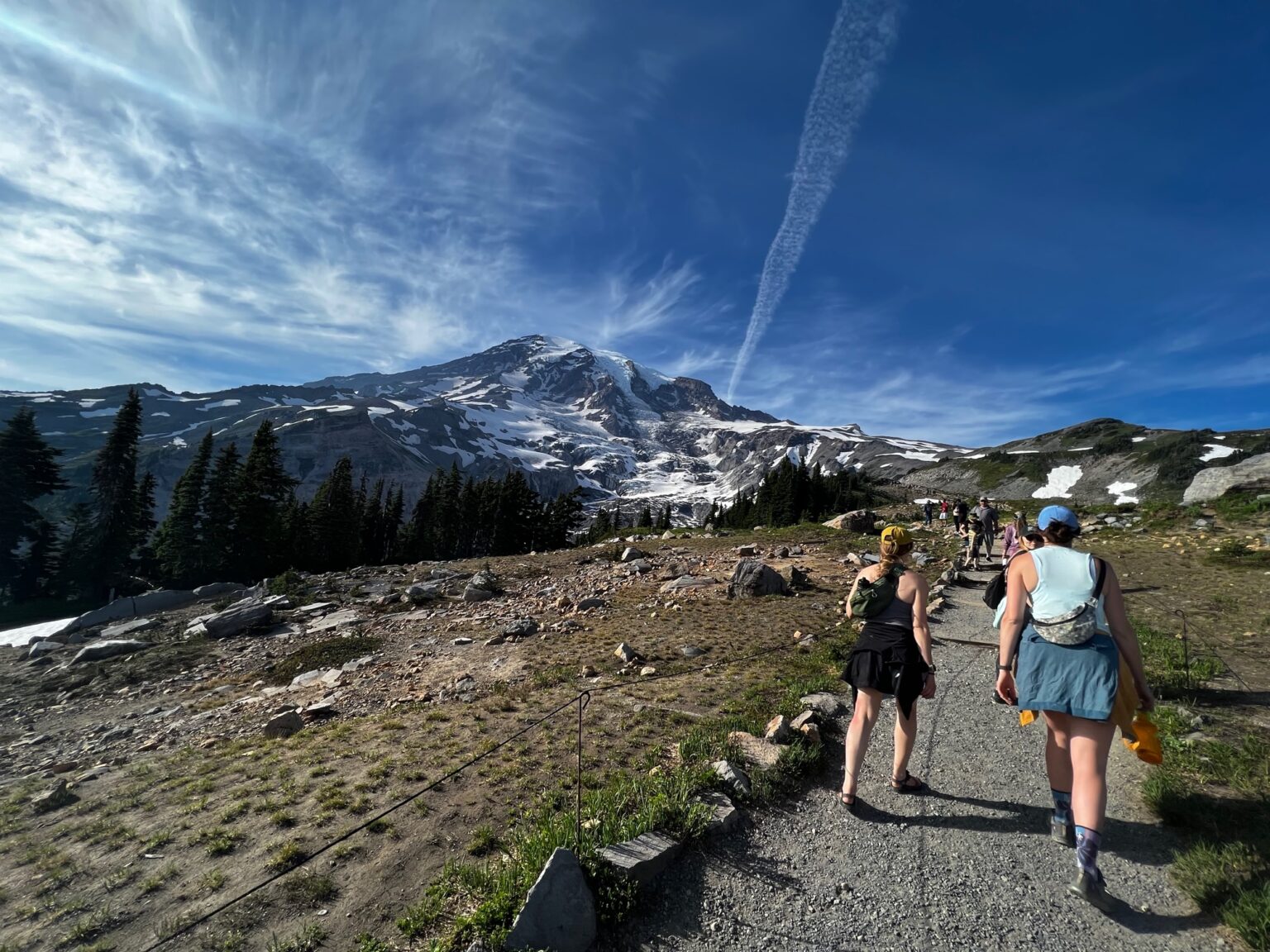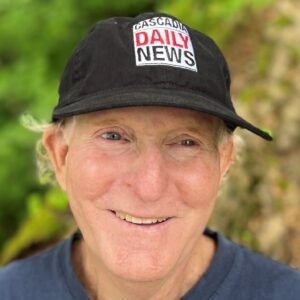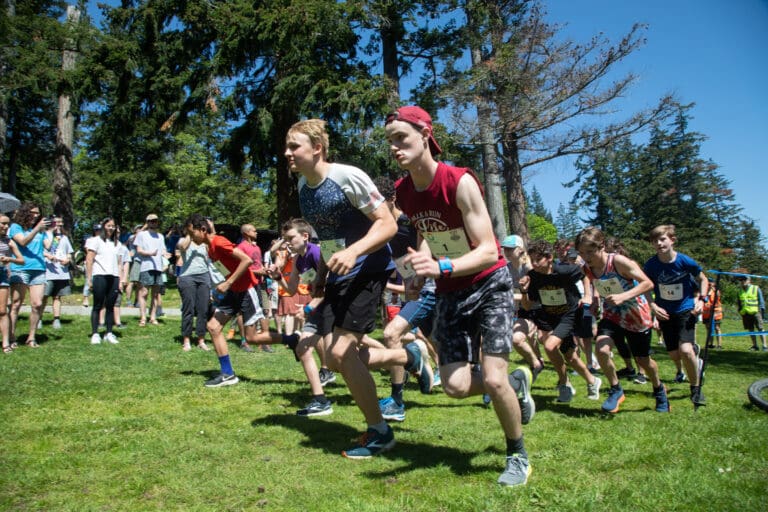We can get misty-eyed and nostalgic, but the wilderness experience of yesteryear has gone the way of the payphone.
This should surprise no one other than the reclusive holed up in his Lettered Streets bungalow with six feral cats.
It feels like we reached an inflection point when Mount Rainier National Park officials announced in January plans to implement a pilot reservation system this summer to control the hordes who have stampeded Washington’s giant snow cone.
A new timed entry permit exemplifies what the outdoor experience has become: We, the people, have oversaturated once-unspoiled lands by turning treasures like Mount Rainier into neighborhood playgrounds.
Officials had little choice but to make Rainier the 10th of 63 parks to institute a reservation permit to manage visitation.
I saw it firsthand when stopping at Paradise on a Saturday evening last July for a quick hike along the Skyline Trail. Visitors swarmed the Henry M. Jackson Memorial Visitor Center. Some blithely spread out across the fragile meadows instead of following well-defined trails.
In announcing the pilot plan in January, Rainier rangers said they have seen a 40% increase in visitors over the last decade. Rainier hosted a record 2.5 million tourists last year, the National Park Service reported. I doubt those numbers will drop dramatically. The reality is the permit program is here to stay.
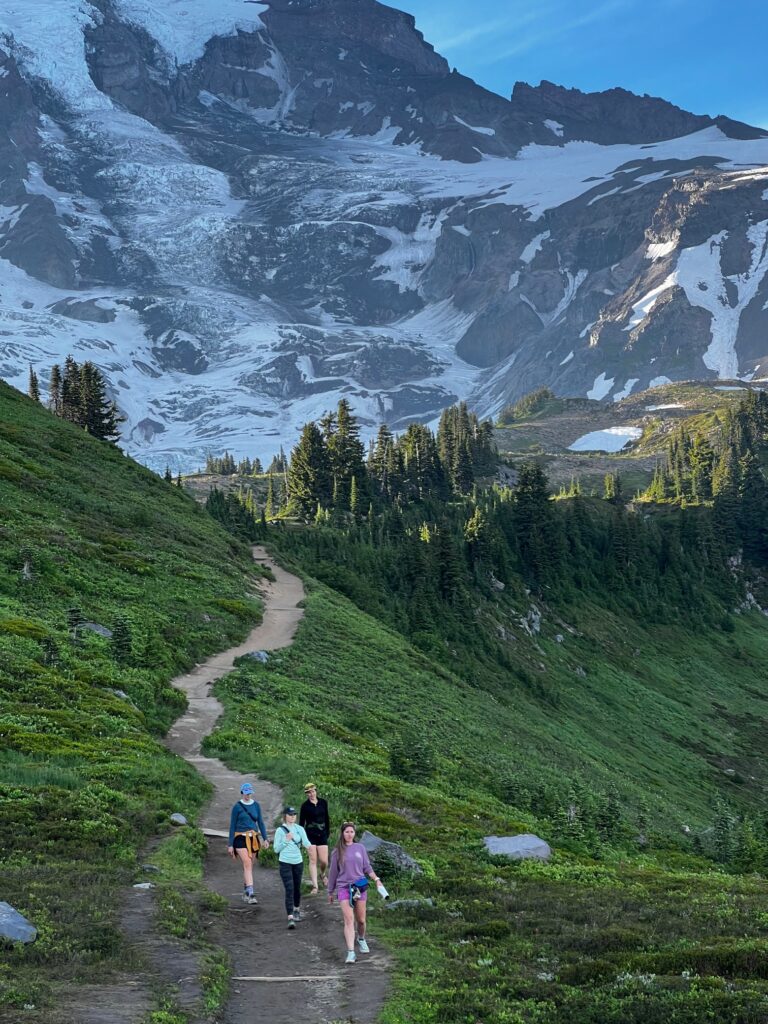
“In recent years, it’s been too common for visitors to sit in idling cars for a couple of hours at the entrance stations and then make laps through the parking lots hoping for an empty parking space,” Rainier superintendent Greg Dudgeon said in a statement.
Rainier’s timed reservations run from 7 a.m. to 3 p.m. May 24 through September 2 for the Paradise Corridor near Ashford and Packwood. It starts July 3 at the Sunrise Corridor via Enumclaw.
Those with lodging or camping reservations don’t need the permit after 1 p.m. on the day of their stay. People with wilderness permits or special-use permits also are exempt.
Visitors to Ohanapecosh, Tipsoo Lake, Carbon River and Mowich Lake won’t need reservations at any time.
For everyone else, here is how the system works:
Day visitors must purchase $2 permits before arriving at the park online at recreation.gov or by calling 1-877-444-6777. Visitors have a two-hour window to enter the park once the permit is active. They can depart any time on the same day.
Reservations are available three months in advance. July bookings open April 1; August through Sept. 2 reservations begin May 1. They’re already taking reservations for May 24 to June 30.
The park also will release a block of reservations at 7 p.m. each night for the next day’s entrance.
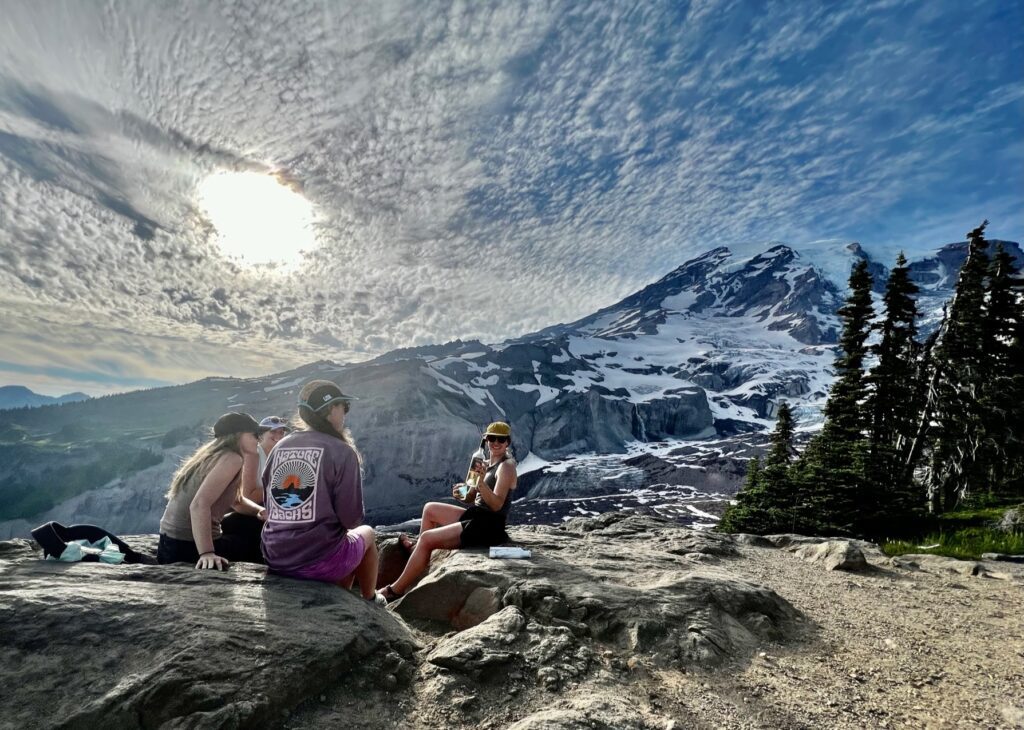
Other national parks with permits are Acadia, Arches, Glacier, Great Smoky, Haleakalā, Rocky Mountain, Shenandoah, Yosemite and Zion. Each park introduced a permit system addressing specific needs.
Great Smoky led the parks with 13 million visitors last year, followed by the Grand Canyon (4.7 million), Zion (4.6 million), Rocky Mountain (4.3 million) and Acadia (4 million). Landmark parks Yosemite and Yellowstone attracted 3.6 and 3.3 million people, respectively.
The Department of the Interior announced in August that tourists spent a record $50.3 billion in 2022 in communities near national parks. The economy supported 378,400 jobs, the agency reported.
“Outdoor recreation is not just good for the soul, it’s a significant driver of our national and local economies and job sustainability,” Interior Secretary Deb Haaland said in a statement.
Focusing on financial gain seems like a misplaced priority while facing overcrowding issues. It neglects the fundamental responsibility of preserving a fraction of public land after 150 years of deforestation and degradation of ecoregions vital to the planet.
The concept leads to an existential debate about managing special places. Fewer amenities would discourage visitation and perhaps eliminate the need for timed entry permits. But then, officials also must consider inclusionary practices to fuel diverse interest in the park system.
It’s easy to snub our noses at Rainier’s problems when living in the shadow of the North Cascades. Yet, the mushrooming King/Snohomish populace is drifting northward like plants affected by climate change.
Okanogan-Wenatchee National Forest rangers estimated more than 3,000 weekend visitors breached the Heather-Maple Pass trail in autumn to see golden larches.
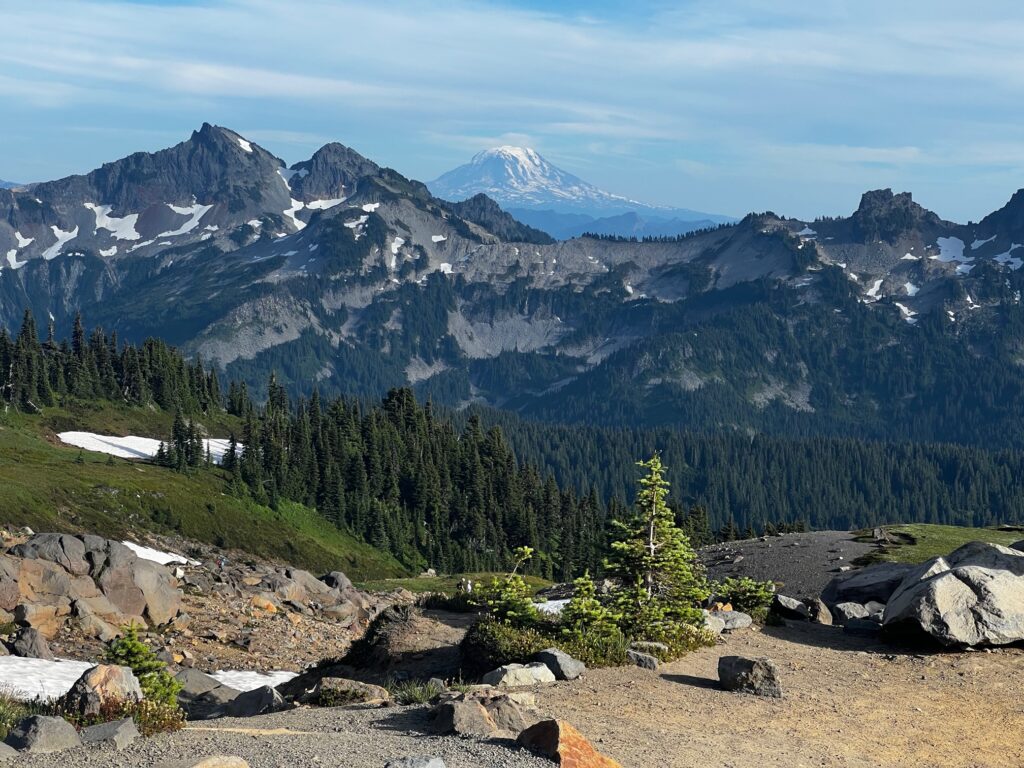
As we drove past miles of cars parked along State Route 20 last October, Bellingham photographer Ken Harrison made a prescient observation: “They’re going to start a permit system in the North Cascades,” he said.
By now, Washington’s outdoors community is familiar with crowd control. The Enchantments in the Stuart Range have had a permit lottery for overnight stays since 1987.
National Forest Service managers monitor this stuff closely. Chris Furr, Methow Valley district ranger, told me they don’t have a threshold for when to consider taking action.
A U.S. Forest Service permit would not mimic the national park’s because the Highway 20 scenic corridor doesn’t have entrance stations like Mount Rainier. If crowding got bad enough, the forest service could station a guard by the trailhead like at Multnomah Falls in the Columbia River Gorge, where $2 timed-entry permits have been required since 2020.
For now, the uptick in visitation happens only for Larch Madness because the stunning Heather-Maple Pass Loop trail is on the top-10 lists of where to see autumn colors.
“Larches bring the majority of attention,” Furr said. “I do understand seeing that many cars along the highway can be jarring to lead people to think this thing is being completely overrun.”
Rosemary Seifried, District Recreation Program Manager, noted the Methow region has 1.3 million acres of land. In other words, the Okanogan National Forest offers plenty of space for people to feel far from the maddening crowds.
She added the spike in visitors during the COVID-19 pandemic seemed to peak in 2022. While the Heather-Maple Pass Loop trail remains busy, “we might have maxed out,” Seifried said.
And North Cascades National Park remains isolated, ranking 58th among park visitation with 30,000 people last year.
Yet, some of us have a nagging question: For how long?
No one has an answer. But everyone should brace for the possibility of dealing with crowd control actions in the future.
Elliott Almond's outdoor column appears monthly. Email: elliottalmond4@gmail.com.

